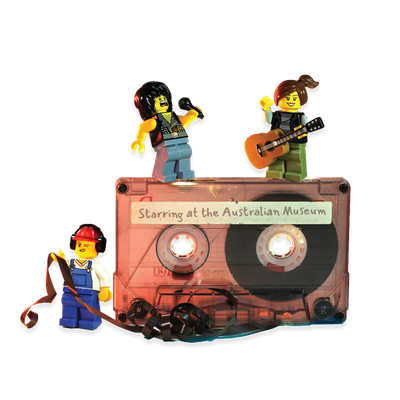Your search returned 50 results
By Page Type
By Tag
- All
- fish (966)
- blog (698)
- fishes of sydney harbour (400)
- First Nations (293)
- Blog (236)
- AMRI (169)
- archives (165)
- Aboriginal and Torres Strait Islander (135)
- Eureka Prizes (131)
- insect (126)
- Ichthyology (125)
- geoscience (109)
- minerals (102)
- climate change (98)
- podcast (94)
- Fish (91)
- Anthropology (89)
- International collections (80)
- Minerals Gallery (78)
- wildlife of sydney (78)
- Labridae (77)
- frog (73)
- gemstone (70)
- history (63)
- photography (63)
- staff (61)
- Mollusca (60)
- gem (59)
- Birds (58)
- education (57)
- Gems (56)
- Indonesia (56)
- AMplify (54)
- shark (54)
- people (53)
- exhibition (51)
- earth sciences (50)
- past exhibitions (50)
- Gobiidae (48)
- Pomacentridae (45)
- sustainability (45)
- Serranidae (44)
- science (43)
- lifelong learning (42)
- Earth and Environmental Science (41)
- Syngnathidae (41)
- Ancient Egypt (40)
- Bali (40)
- bird (40)
- dangerous australians (40)
-
Structure of volcanoes
https://australian.museum/learn/minerals/shaping-earth/structure-of-volcanoes/Although volcanoes are often seen as being destructive they are also constructive. They add more land to the surface of the Earth and, when weathered, provide us with a nutrient-rich soil for agriculture.
-
Igneous intrusions
https://australian.museum/learn/minerals/shaping-earth/igneous-intrusions/Molten magma can invade the Earth's upper layers and then solidify as igneous intrusions.
-
Plate Tectonics
https://australian.museum/learn/minerals/shaping-earth/plate-tectonic-processes/Since the 1950s, several discoveries have led to a new understanding of how the Earth works.
-
The universe
https://australian.museum/learn/minerals/shaping-earth/the-universe/The universe can be defined as the whole of existing things from the scale of sub-micron to outer space.
-
Looking inside the Earth
https://australian.museum/learn/minerals/shaping-earth/looking-inside-the-earth/The internal structure of the Earth consists of three main parts, the crust, mantle and core. The division between the crust and the mantle is called the Moho.
-
What are minerals?
https://australian.museum/learn/minerals/what-are-minerals/Minerals are the building blocks of our planet. Discover what they reveal about the history of Earth and our solar system and what makes them so essential to our existence.
-
Gemstones
https://australian.museum/learn/minerals/gemstones/Gemstones are prized for their beautiful colours and patterns and are used in a range of applications including jewellery, decorative items and as important features of mineral collections.
-
Where will the next volcano erupt in Australia?
https://australian.museum/learn/news/blog/amri-where-next-volcano-erupt-in-australia/The volcanic future of Australia is revealed.
-
Water and sedimentary transport
https://australian.museum/learn/minerals/shaping-earth/water-and-sedimentary-processes/Water plays a vital role in most sedimentary processes. Pure water itself has little effect on rocks. It is the dissolved gases in water, particularly carbon dioxide, that cause the chemical decay of minerals and mineral dissolution.
-
Igneous rock types
https://australian.museum/learn/minerals/shaping-earth/igneous-rock-types/Igneous rocks can be divided up into four groups, based on how they were formed and what they are made of.
-
Find out more
Tails from the Coasts
Special exhibition
On now![]()
-
Find out more
Burra
Permanent kids learning space
10am - 4.30pm![]()
-
Discover more
RELICS
Special Exhibition
Opens 16 August 2025![]()
-
Discover more
Minerals
Permanent exhibition
Open daily![]()





